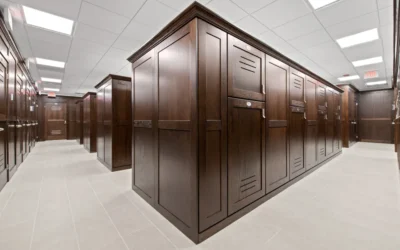The trend of consolidation in the self-storage industry continues unabated, as the public REITs and large private operators keep buying independently owned facilities and new development remains scarce.
Executives in the self-storage industry discussed the current state of consolidation and the realities of operating in that environment during the Self Storage Association Fall Conference and Trade Show in Las Vegas.
“No doubt, we are seeing operational and financial consolidation,” said panelist Bill Hobin, president and CEO of The William Warren Group, a private self-storage operator.
“As Public Storage is buying anything it can get its hands on, so are the [other REITs] and regional operators. More properties are shifting to fewer platforms,” Hobin said.
Joining Hobin on the panel (pictured at top) were Dave Benson, president and CEO of private operator Morningstar Properties; Jonathan Perry, senior vice president of investments at public REIT CubeSmart; and Mike Rogers, vice president of real estate and asset management at public REIT Sovran Self Storage, which operates the Uncle Bob’s Self Storage chain. Chico LeClaire, senior director of Marcus & Millichap’s National Self-Storage Group, moderated the panel.
Lack of supply
A major contributor to ongoing consolidation is the lack of new self-storage facilities being built, Hobin said.
The building boom that took place in the mid-2000s brought a slew of independently owned self-storage facilities, and this diluted the market shares of top operators. Since the 2007-09 recession, however, top operators have picked up the pace of acquisitions but have yet to dive deeply into development.

“No doubt, we are seeing operational and financial consolidation,” StorQuest executive Bill Hobin says.
“I think [consolidation] ebbs and flows based on the development cycle we are in,” Hobin said. “If everyone gets excited and builds 10 new stores, the trend will reverse.”
The amount of self-storage development in the U.S. has increased slightly over the past two years and is expected to ramp up considerably over the next several years.
New strategies
Morningstar’s Benson said the consolidation trend has led many operators to alter approaches.
“It used to be everyone in this room wanted to be Public Storage when they grow up by adding and adding more stores,” Benson said. “Now, we are seeing different strategies. Smaller operators now have shorter-term goals.”
That has made some private operators like Morningstar more transaction-driven — building up portfolios and selling them to larger operators. For example, Morningstar has twice sold large portfolios to Public Storage, once in 2006 and again in 2013. Since the last deal, Morningstar has been buying self-storage facilities once again.
Status quo?
Mike Rogers, who leads acquisitions at Sovran, said the degree of consolidation is not as high as some make it out to be. Rogers said the ratio of public-to-private ownership has not changed much since Sovran went public 20 years ago. At the time, he said, “the industry was abuzz” with talk about consolidation.
Back then, the U.S. had about 25,000 storage facilities, with four or five REITs controlling about 11 percent of those, according to Rogers. He said that many predicted at the time that the REITs would quickly gobble up everything. With the total number of facilities growing to more than 50,000 since then, the ratio of REIT ownership has barely shifted, he said.

CubeSmart executive Jonathan Perry says REITs control one-fourth of the top 20 metro markets in the U.S.
“Where we are today, it’s the same thing. It is the same percentage,” Rogers said.
However, CubeSmart’s Perry said that in the 20 biggest metro areas, the four public REITs control one-fourth of the storage market.
Acquisition pipeline
Not all consolidation in the industry is taking place by acquisition. Three out of the four public REITs have expanded their footprint by offering third-party management services to smaller operators.
Panelists said private operators are turning to third-party management to take advantage of revenue management software, advertising platforms and call center technology that only large players can afford. Without them, many operators find themselves at a competitive disadvantage.
For big operators, third-party management represents “a fantastic pipeline” for future acquisitions, Perry said. For example, CubeSmart several years ago bought a third-party management company with contracts in place at 80 facilities. Of those, the REIT has purchased more than half of those facilities.
Upside for private operators
Private operators such as The William Warren Group, which operates the StorQuest Self Storage brand, also have latched onto third-party management.
Hobin recalled that his company once was hired to manage seven facilities in Colorado. With occupancy in the mid-80s, the portfolio seemed to already be in decent shape, but Hobin said there were some missed opportunities when it came to boosting revenue. Over 18 months, he said, StorQuest lifted occupancy to about 90 percent and grew net operating income by $450,000.
Hobin said that thanks to the improved performance, The William Warren Group actually ended up paying $7 million more for the seven-facility portfolio than it otherwise would have.But, he added, “it was still a good trade for us and helped us grow in the region.”







